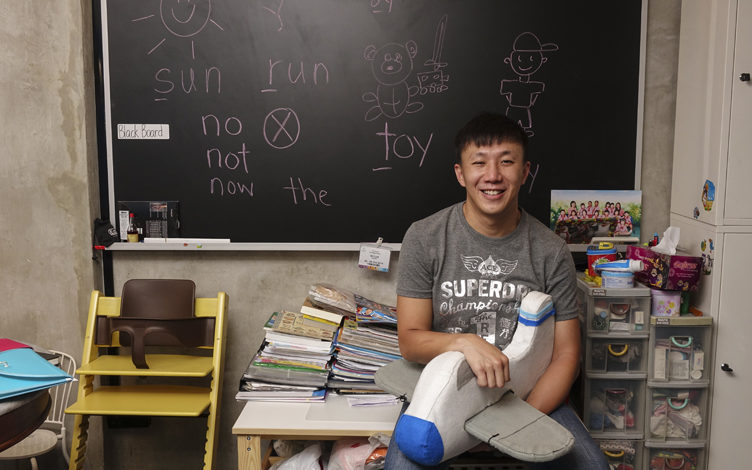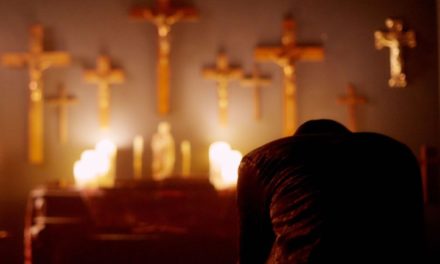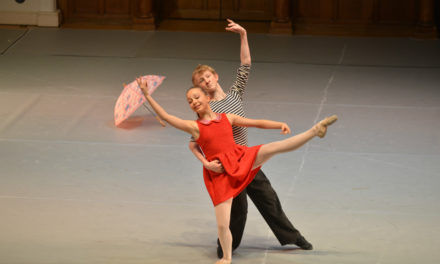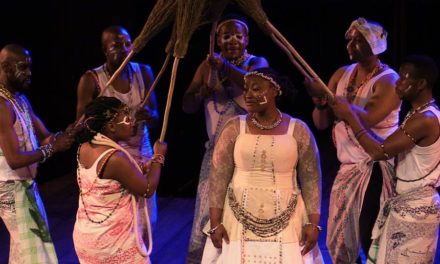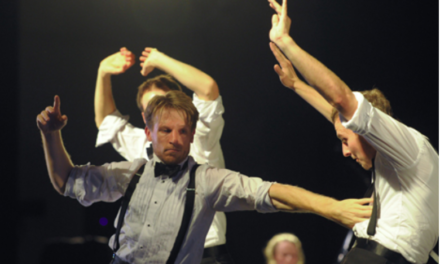Young Artist Award recipient Ian Loy has carved himself a niche in the Singapore arts scene specializing in theatre for young audiences. The practitioner, who went out on his own and founded MySuperFuture Theatrical Productions in 2009, is no stranger to Esplanade’s popular children’s theatre series, PLAYtime!. In fact, he has created more than 10 original works for the series over the past few years.
We catch up with the Esplanade Associate Artist for Theatre for Young Audiences as he reflects on fatherhood, his journey with the arts center so far, what keeps him going and his hopes for the future.
Receiving the 2014 Young Artist Award was a big deal! What ran through your mind when you first heard the news?
I was like, “Waaah!” and “Whoa!” because I thought I wouldn’t get it! It was a great feeling, and among the first few people I phoned to share the news and thank were my wife, Luanne Poh (PLAYtime! producer at the time) and Benson Puah (then Esplanade CEO).
It was a very exciting moment that has since encouraged and inspired a greater sense of social responsibility in my craft. I work quite extensively with different communities and want to see kids with special needs or who are at-risk to have access to quality theatre like everyone else. And I want to continue doing this with Esplanade as it’s where I first started. This award has given me the kind of encouragement that boosts my energy to run all these races and jog my creativity for future projects.
Can you talk about how you started collaborating with Esplanade?
It started in 2009 when Luanne approached me to tell me about a theatre project she was working on for young audiences. It was something fresh and new to me and it was interactive. I’d always had this director’s streak in me that I wanted to explore and Esplanade gave me the platform to do that with PLAYtime!. Together, we created shows specifically targeted at two to four-year-olds and their cognitive needs. That’s how we got together to work on shows till today.
Can you share an example of a collaboration that you feel was particularly meaningful or memorable?
Esplanade is great at connecting people, especially artists. I first met the music group Stan x Soap in 2009. And from then they have worked on the music of the PLAYtime! productions I direct, which really enhances the shows and make them more colorful. To get to know these artists and see the kind of discipline and dedication they put into their work, it rubs off on me and I feel inspired to do better.
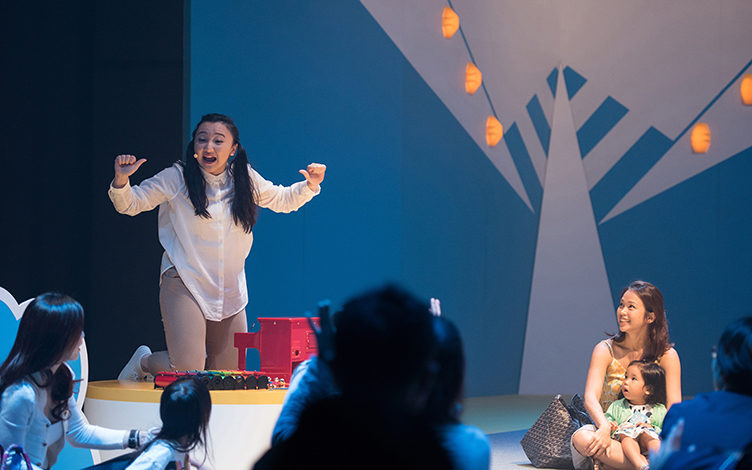
The Bird Who Was Afraid of Heights, first staged in 2016.
You have been an Esplanade Associate Artist for Theatre for Young Audiences (TYA) since 2017. How has the programme supported the development of your creative practice so far?
It is encouraging for me that Esplanade considers my craft in TYA something worth putting their faith into. When I have a proposal or a creative need, they are faithful in lending their support and offering the necessary to help me realize my ideas into reality. They also have been my advisors and benefactors, providing timely consultation as well as local and international theatrical exposure to help widen my creative horizon and experiences.
Tell us more about what you are working on now as an Associate Artist.
Currently, I am working on a project called Sea Circus (2018–2020) with three other artists: Ellison Tan, Myra Loke, and Serene Tan. We are working towards presenting the project as a 6-hour durational performance for babies from 8 months to 2 years old, and their caregivers. Audiences are free to come in at any time during the performance and leave any time too.
This project was inspired by conversations I had with various like-minded overseas TYA practitioners who were generous in sharing their ideas and thoughts about durational performances. At the end of the day, such performances are created to cater to the needs of caregivers and their children.
You are a father to two young children. Has fatherhood changed your approach to creating works for young audiences?
Yes, and absolutely! Having my own kids has created a greater sense of responsibility, not just towards my own kids, but who they represent — children like them who are full of energy and curiosity, wanting to create, fiddle inquisitively, hear stories that transport them somewhere beyond their imagination, and so much more.
My artistry in TYA is never complete without my children. The documentation of my children’s experiences and my experience with them as they grow older are relevant to all the work that I have created since. These experiences eventually become new inspirations. In fact, my children are like my secret R & D department at home, creating new works with me!
What are your thoughts on the current boom in Singapore theatre for young audiences? What do you think are the contributing factors to this spike?
Parents today are generally more informed and they want to expose their children to as many things as possible, so many artists and companies are picking up on this demand. That’s why you have an array of programmes for the young, such as workshops, activities, festivals, and big shows being brought in from overseas. It is a boom but we have to be sure that our theatre productions do not lose their Singapore identity. Most of the times, in my shows, I will include an Asian element, be it the music or physical performance, to preserve our unique identity.
What do you think is most important to keep this boom going?
We need to keep artists inspired and believe that it is worthwhile to invest in young audiences. And we need to have the right tools and knowledge to meet their cognitive needs. For instance, you can’t put up a show titled Red Riding Hood and claim that it’s good for all ages. You want to maximize the reach within a certain age group. For me, I always believe that something special happens between the ages of two and under, two to four, five to eight, and nine to 12 — these are the markers that I set for myself.
Where do you see your brand of children’s theatre heading?
I hope to develop my craft and my skills by learning from others. I’m always afraid that I get to a point where I think I know everything, considering I started out at the young age of 19. Theatre is not built solely on my ideas and preferences, so I want to learn from the actors, collaborators, and musicians I work with, even from the young audience members and their parents who come to see my shows.
What are your hopes for the future?
Personally, I’d like to see more arts intervention in various communities in Singapore. There is a case study I once read that intrigued me. It was about how a small town in London was transformed from a slum to a lively neighborhood through art. Drugs, poverty and broken families were rife in that town before a group of artists went and introduced art programmes and workshops on sculpting and painting. It started a social change, and bit by bit, the morale of the neighborhood was lifted.
They say the arts move people and it did! Soon, many started taking their children there to see and participate in the activities. People from other areas also started pouring into that town, changing it. That’s what I want to see in Singapore in the community, to bring about that kind of arts intervention that’s big enough to make a social change.
This article originally published by Esplanade – Theatres on the Bay, Singapore on August 6, 2018, at www.esplanade.com/learn. Reproduced with permission courtesy of Esplanade – Theatres on the Bay.
This post was written by the author in their personal capacity.The opinions expressed in this article are the author’s own and do not reflect the view of The Theatre Times, their staff or collaborators.
This post was written by Esplanade .
The views expressed here belong to the author and do not necessarily reflect our views and opinions.

